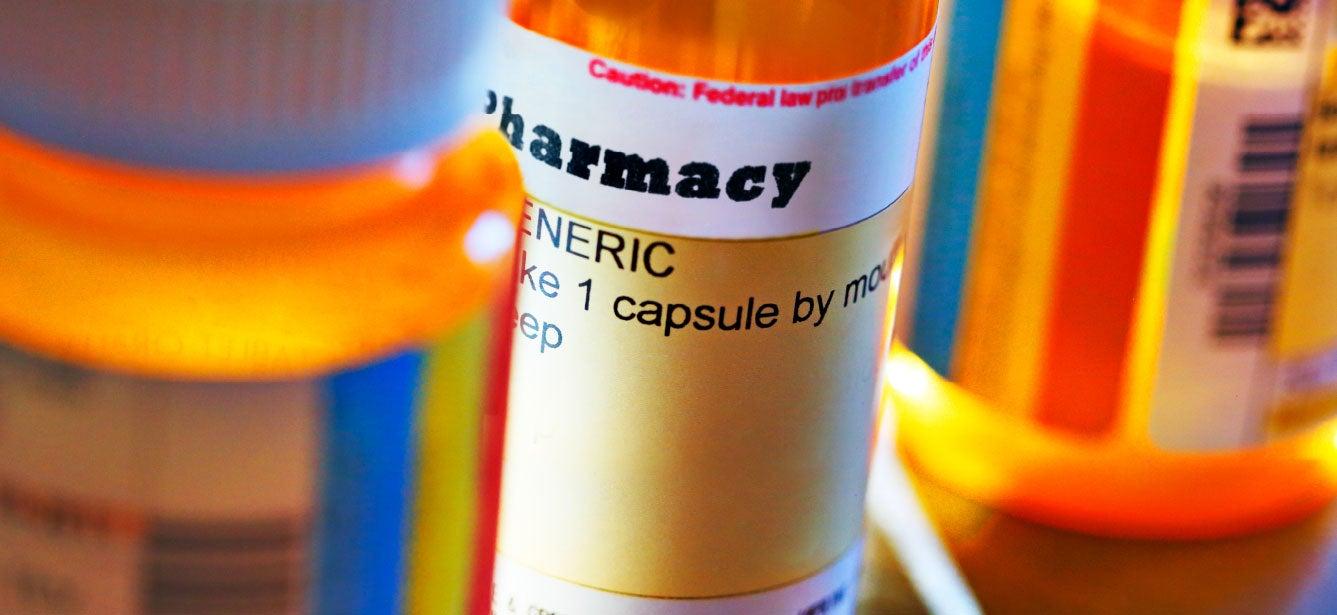
Prescription drug coverage is pretty essential—especially if we're 65 or older. A reported 90% of us take at least one prescription drug on a regular basis; and 80% take at least two.1 A good drug plan can help greatly lower the costs of the medications we need to stay healthy and feel our best.
That's why it's always a good practice to review your existing prescription drug coerage during each year's Medicare Annual Enrollment Period (Oct. 15–Dec. 7), advised Ryan Ramsey, Associate Director of Health Coverage and Benefits at NCOA.
"What worked for you last year may not be the best choice moving forward," he said. "Your health status may have changed, the prescriptions you take may have changed, and your personal finances may be different. These all can mean that better options are available."
Any changes you make in your prescription drug coverage will become effective on Jan. 1.
Do Medicare Advantage plans cover prescriptions?
Most Medicare Advantage (also called Medicare Part C) plans offer prescription drug coverage through Medicare Part D. These plans are called Medicare Advantage Prescription Drug (MA-PD) plans. In 2024, 30.2 million Part D beneficiaries (57% of enrollees) were enrolled in such plans2—including health maintenance organization (HMO) plans, preferred provider organization (PPO) plans, and special needs plans (SNPs). With private fee-for-service (PFFS) plans, prescription drugs may be covered. If your PFFS plan does not offer drug coverage, you can join a separate Medicare Part D plan to get this benefit.
Medicare Medical Savings Account (MSA) plans do not offer Part D coverage. If you join an MSA plan and want prescription drug benefits, you’ll have to enroll in a separate Medicare drug plan.
It’s important to know what prescriptions are generally covered by an MAPD plan and at what tier, what your out-of-pocket costs might look like, and how to use your plan at the pharmacy. You should also be aware of any cost-saving opportunities that may be available. This will help you make smart, informed coverage decisions for yourself or someone you help provide care for.
How does prescription drug coverage work with Medicare Advantage plans?
All MA-PD plans must cover a broad range of prescription drugs that Medicare beneficiaries take. This includes most medications in protected drug classes, such as those used to treat cancer, depression, and HIV/AIDS.
Under MAPD plans, members can access a formulary, or a list of drugs that a specific plan will cover. The formulary shows you:
- If your individual prescriptions are covered
- What tier a drug falls under (lower-tier drugs usually cost less, while higher-tier drugs cost more)
- How much a drug costs
A formulary covers both generic and brand-name drugs. It will have two or more of the most commonly prescribed drugs for each class and category. This helps make it easier for you to get the prescription drugs you need. If your MAPD plan’s formulary does not include the exact drug you need, a comparable drug may be available. In cases where no covered drugs meet your medical requirements, you can file for an exception.
MA-PD plans may update their list of covered drugs as new medical information becomes available and new drugs are released into the marketplace. Similarly, plans might remove prescription drugs from their formulary if for some reason they are no longer considered safe. It’s important to note that formularies can change, so you should review your plan’s prescription drug coverage every year.
How do I use my Medicare Advantage prescription drug plan at the pharmacy?
When you’re using your MA-PD plan for the first time in person at the pharmacy, you’ll want to bring with you:
- Your red, white, and blue Medicare card
- A photo I.D. (such as a valid driver’s license)
- Your plan membership card
Having these items will allow the pharmacy to get you set up in their system, which will make prescription drop-offs and pick-ups faster and easier. Do you have certain medications you take regularly? Depending on your MA-PD plan, your pharmacy may be able to give you up to 3 months’ worth of covered drugs in one visit to save you trips out of the house.
If you have no transportation or it’s difficult to leave your home, a mail-order drug program may be another option. Certain MA-PD plans allow you to get a 3-month supply of covered medications shipped directly to your door.
How can I save money on prescriptions through Medicare Advantage?
Prescription medications can be expensive, but there are a number of ways to cut down on your drug costs:
- Choose generic drugs whenever possible: Generic medications can cost significantly less than their brand-name counterparts—and they work just as well. When your health care provider writes you a prescription, ask them to allow the pharmacy to substitute a generic drug whenever appropriate.
- Use a preferred pharmacy: Some Medicare Advantage plans have contracts with in-network (“preferred”) pharmacies, which provide members with discounted services and supplies. Be sure to fill your prescriptions at in-network pharmacies to ensure they’re covered. If you don’t know which pharmacies are in network, check with your plan.
- Order a larger supply: Whether you get it from your local pharmacy or through a mail-order program, purchasing a 3-month supply of your medications may cost less than filling the prescription each month. Some plans, like Aetna, offer a 100-day supply on select prescription drugs. Aetna MA-PD members can take advantage of this new, larger supply with no increase in copay/coinsurance.
- Shop around: Not all pharmacies charge the same for prescription drugs—even those that are in-network. If a drug isn't covered by your MA-PD plan, or if you haven't yet met your deductible, call different pharmacies near you to ask about their cost for a medication.
Sources
1. J. Mark Ruscin, PharmD, FCCP, BCPS, et al. Aging and Medications. Merck Manual. August 2023. Found on the internet at https://www.merckmanuals.com/home/older-people-s-health-issues/aging-and-medications/aging-and-medications
2. Juliette Cubansky, et al. Medicare Part D in 2025: A First Look at Prescription Drug Plan Availability, Premiums, and Cost Sharing. KFF. November 22, 2024. Found on the internet at




